A team of senior U.S. Air Force officers has met with airmen across a range of fighter wings to gain a better understanding of possible reasons behind a surge in mishaps in recent months. As official investigations into the accidents continue, experienced pilots are raising concerns over possible cuts in flying hours and increasing reliance on simulators that could lead to future mishaps, or even might have been a contributing cause of some of the recent ones.
Last week, Gen Mike Holmes, the boss of Air Combat Command (ACC), visited several flying wings across the country to discuss training and safety. It’s part of an effort to establish if there are any common factors in the recent incidents. The USAF last saw a surge in crashes in fiscal year 2018, which prompted reviews across major commands and an operational pause to facilitate a safety review. The Air Force has lost five fighter aircraft in a spate of high-profile accidents, two of which claimed the lives of their pilots. You can read the War Zone’s account of the recent incidents here.
“The recent incidents involve multiple aircraft types from multiple commands,” Air Force spokesperson Leah Garton told Military.com ahead of Holmes’ tour. “ACC has also distributed updated guidance and safety information to all of our flying units.”
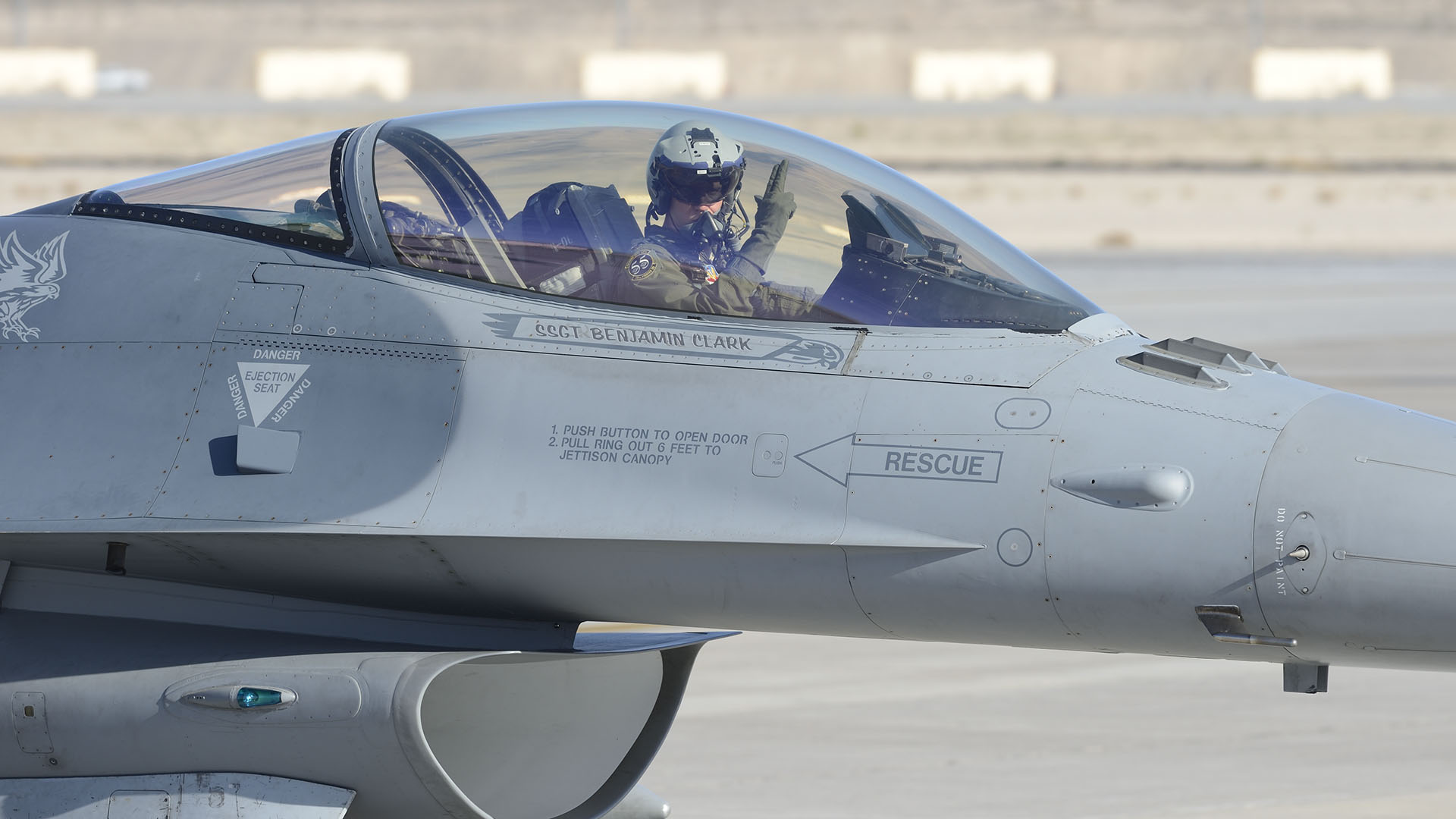
As ACC sent that new information to its flying squadrons, some experienced pilots spoke out regarding their concerns over initiatives that are aimed at expediting pilot training. While the exact cause of the recent crashes requires a full and thorough investigation, pilots have emphasized the importance of live flying and building airmanship in young fighter pilots.
One USAF pilot told the War Zone that the increased use of simulators must not be at the expense of time spent in a real cockpit. A widely held concern in the fighter pilot community is that new aviators are arriving at front line fighter squadrons with a lower initial experience level than their predecessors:
“Students receive less total flight experience in their initial flight screening, in UPT [Undergraduate Pilot Training], and IFF [introduction to fighter fundamentals], with increased emphasis on virtual training and efficiency on the horizon,” one USAF fighter pilot recently told the War Zone. “While FTUs [Formal Training Units] and undergraduate training programs can get student pilots up to par for a few flights in each phase [enough for them to progress along the timeline], the lack of experience is beginning to show in basic flight discipline.”
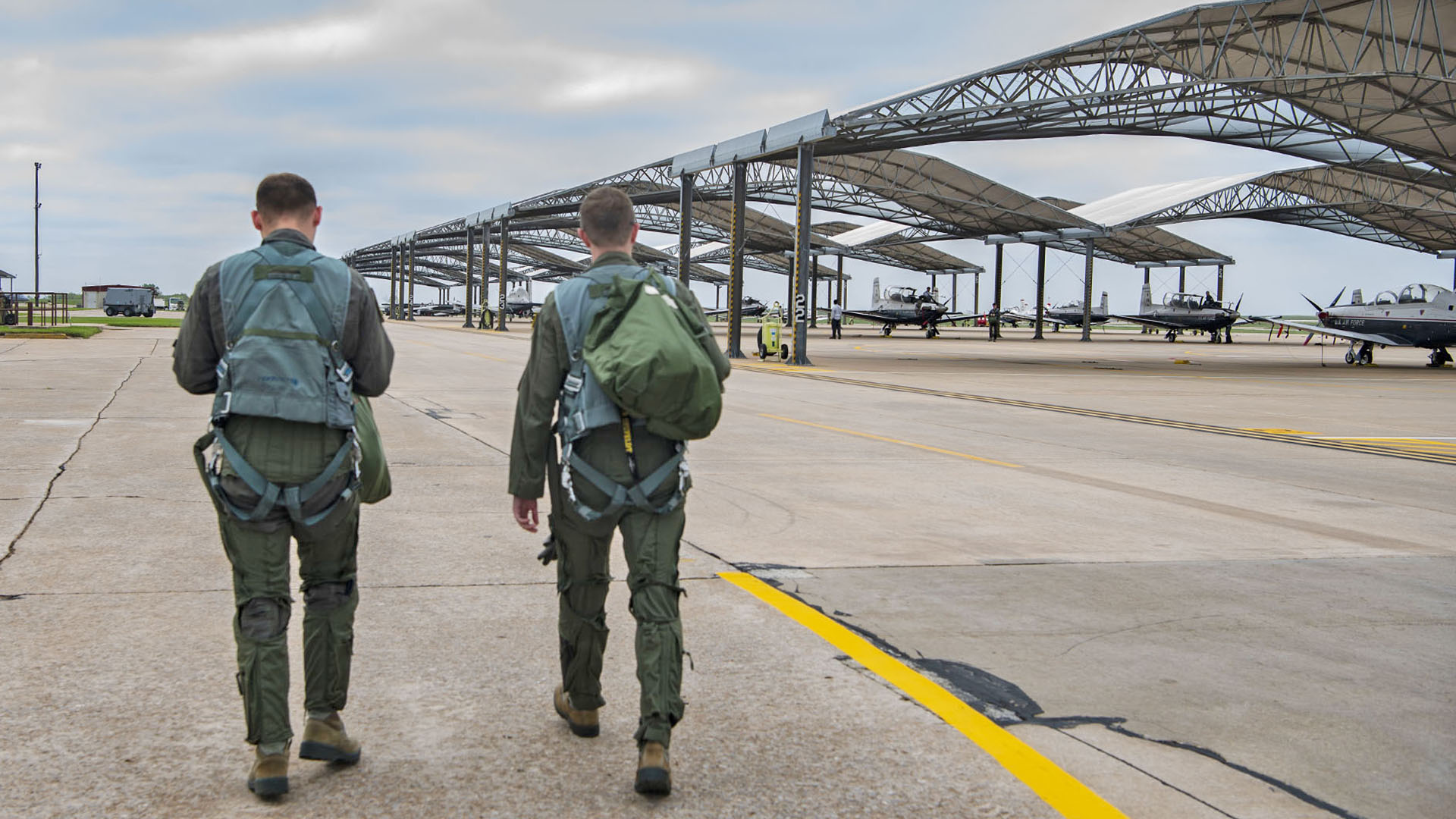
The pilot says the evidence is not anecdotal, adding that in feedback sessions from the operational squadrons to the FTUs, there has been a clear message: basic airmanship is lacking in the pilots that show up to their units. “While a student may reach the level of expertise to graduate a fighter basic course, they can still find themselves in situations where experience would be of great value.”
The fighter pilot crisis
As far back as 2017, the USAF said it was 1,500 pilots short, and it expected the situation to get worse as airlines hired aggressively and as personnel grew increasingly demoralized due to relentless deployment cycles and time away from home, among other lifestyle and professional factors. During his time as the head of the USAF, General David Goldfein has spearheaded efforts to radically improve the situation for pilots within USAF squadrons, tackling the issues of aircraft availability and removing time-consuming trivial tasks. The War Zone reported in 2016 how a range of variables have contributed to the pilot shortfall.
The USAF set up an Aircrew Crisis Task Force in August 2017 as part of its efforts to address the problem of personnel retention. It also looked at new ways that could expedite training to help build capacity. At the time, General Goldfein said that it took a decade and between $6-10 million on average to train a fighter pilot. In 2018, he added that the USAF needed to grow the pilot training pipeline from 1,200 slots to 1,400 annually.
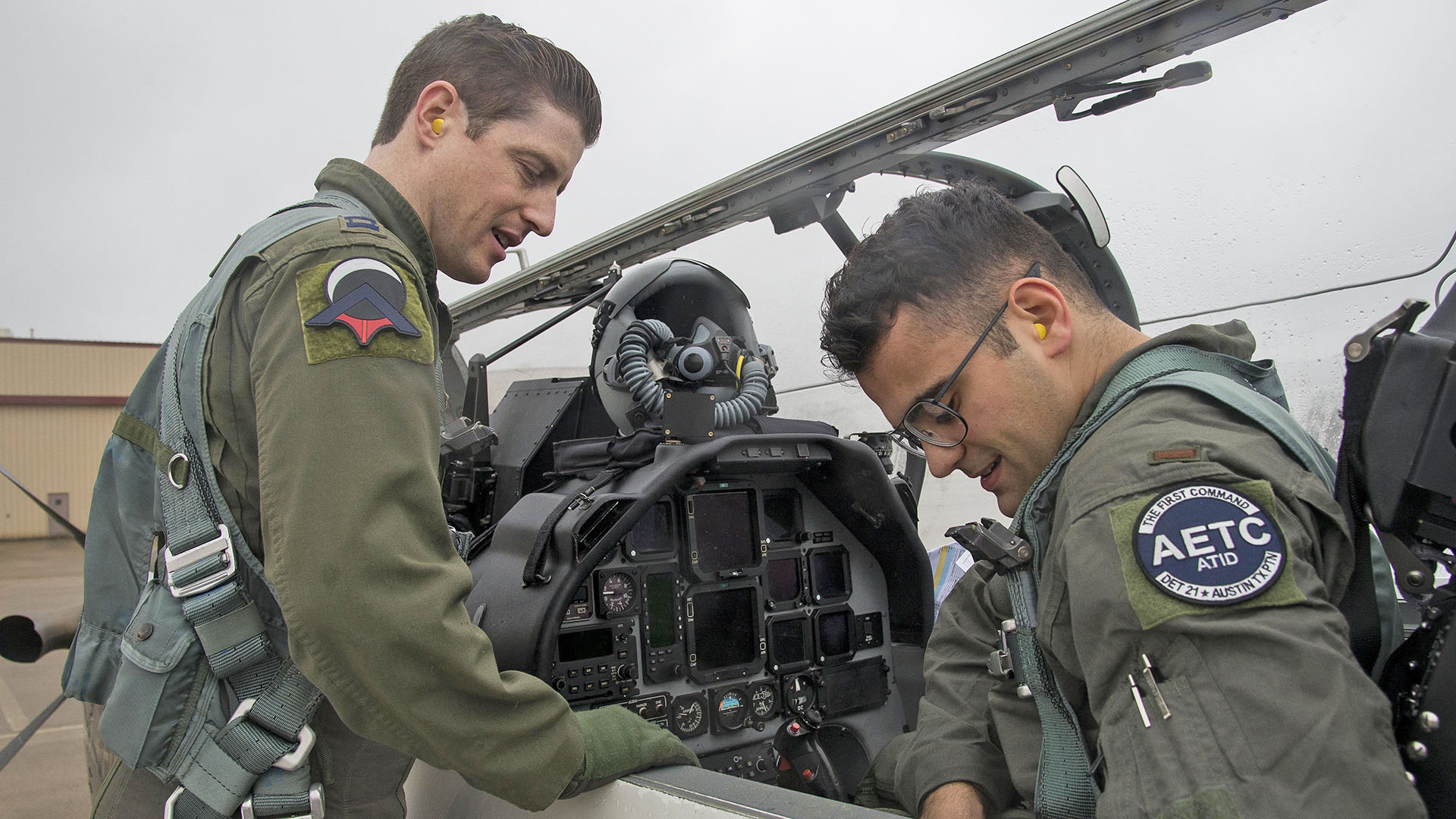
The shortage in trained aircrews to fill cockpits was further compounded by USAF leadership calls in 2018 for unprecedented levels of growth, with an aspiration of 74 squadrons in overall strength by 2030. Dubbed “The Air Force We Need,” this was designed to match overall force mass with the range and scale of missions the service is asked to fulfill. Ironically, a worsening personnel situation and tightening budgets led to Gen Goldfein later acknowledging: “there’s a difference between the Air Force we need and the Air Force that we can afford.”
The USAF’s fighter pilot crisis piled pressure on Air Education and Training Command, or AETC, to make the training pipeline more efficient, both in terms of cost and productivity, in an unprecedented bid to get young aviators to frontline squadrons faster. The organization has been looking to exploit advanced learning techniques, combined with simulators, in an effort to maximize production and graduate students faster, with less training time and fewer weeks in the process.
Despite the push to bring more technology into the process, experienced USAF pilots began stressing the importance of strapping into a jet and going flying. Every single sortie generates new experiences and lessons that cannot be replicated even inside the most advanced full-motion dome simulator. There is no way to accurately replicate the stress of life-threatening situations, unprecedented combinations of events, G-forces, or the pumping adrenaline that are part and parcel of live flying.
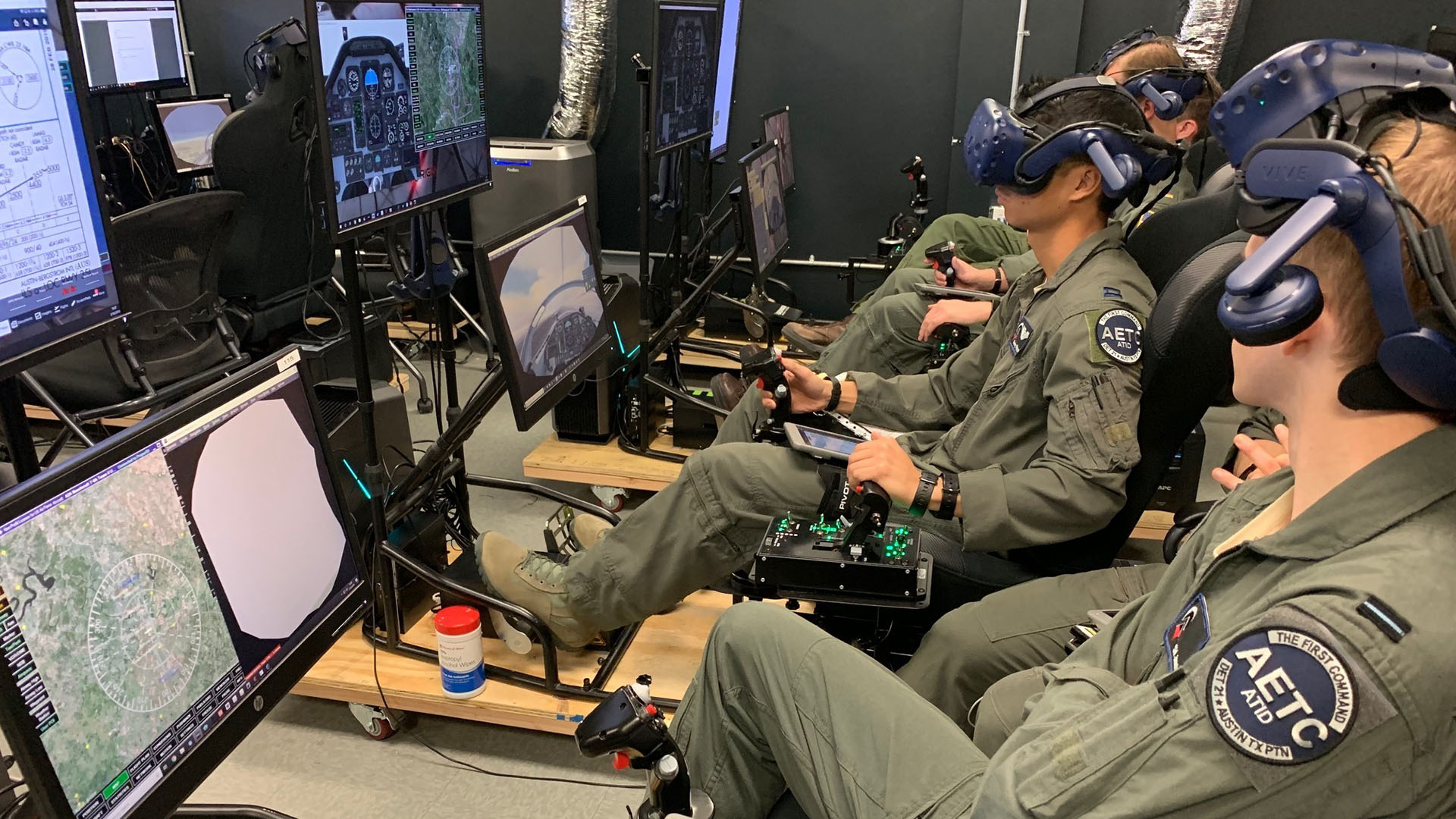
The Pilot Training Next (PTN) initiative was launched as part of an AETC effort to “reimagine” ways to teach new airmen. It looked at methods for better, faster, and deeper learning. It also sought to embrace new technologies such as virtual reality, artificial intelligence, and data analytics, which could be tailored to the training environment and each student.
PTN reflected a clear need for change. The USAF pilot training model had remained largely untouched for decades and was in need of a major overhaul. However, pilots fear flight hour reductions may be executed while replacement virtual training remains in experimental phases.
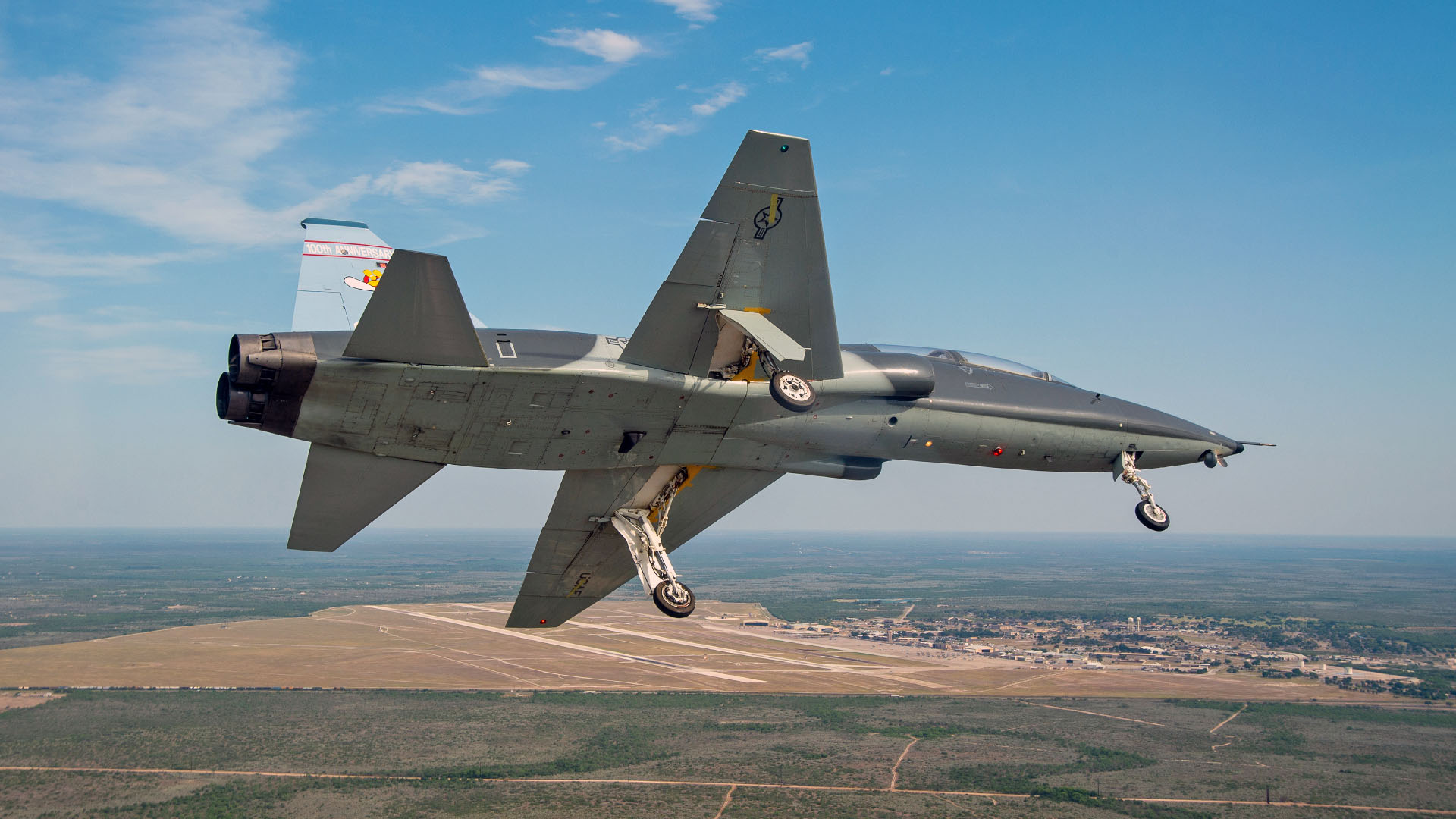
A new hope
For air arms around the world, the massive economic downturn of 2020 triggered by the COVID-19 pandemic has seen many ex-military commercial pilots hanging up their white short-sleeved dress shirts and black trousers and pulling out their green or tan flying suits to swing back into military life. Earlier this year the service acknowledged it had made little progress in addressing pilot shortfalls, so for the USAF, specifically, it could offer something of a reprieve.
While some experienced personnel returning to the Air Force’s flying squadrons may represent a partial relief, but the flow in of new pilots at the bottom end is no less critical. Recruiting the right caliber of young people and efficiently training them is vital to getting highly-skilled young aviators out to the front line and yielding maximum return on the investment in their tuition and fortifies the force’s future.
In a bid to carefully build efficiency into the training system and embrace the advanced training attributes of new aircraft such as the Boeing T-7A Red Hawk, a further new strategy is now being evaluated. Air Combat Command’s (ACC’s) “Rebuilding the Forge,” or Reforge, is a concept of operations (CONOP) that could dramatically change the way fighter pilots are trained.
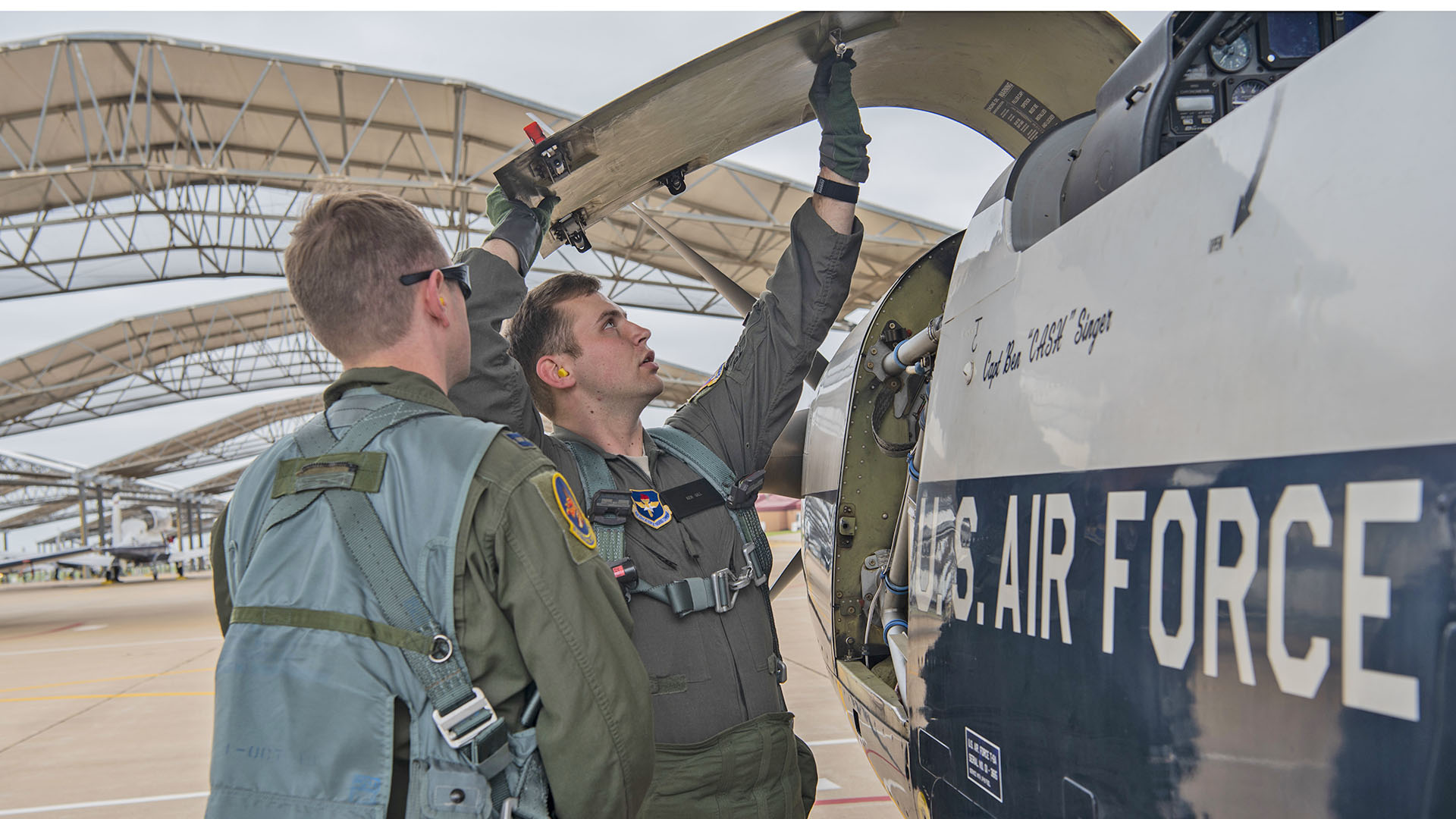
It is hoped that Reforge will generate a better product in less time. The initiative would deliberately train fighter aviators to a mission-ready, flight lead status at a pace and manner that could shave up to 18-months off the overall training cycle. It would dramatically overhaul the existing training pipeline with a shift away from using segregated and disjointed programs that each teach differing core skills. Reforge also aims to blend basic tactical and leadership skills into a new integrated program.
The concept is centered upon a 12-month initial tactical training (ITT) syllabus that proposes to use an advanced training aircraft such as the T-7A to develop new aviators and impart vital tactical skills and experience before they transition into the Combat Air Forces (CAF) via a short course at an FTU. You can read more about this radical change and its many potential impacts in this recent War Zone piece.
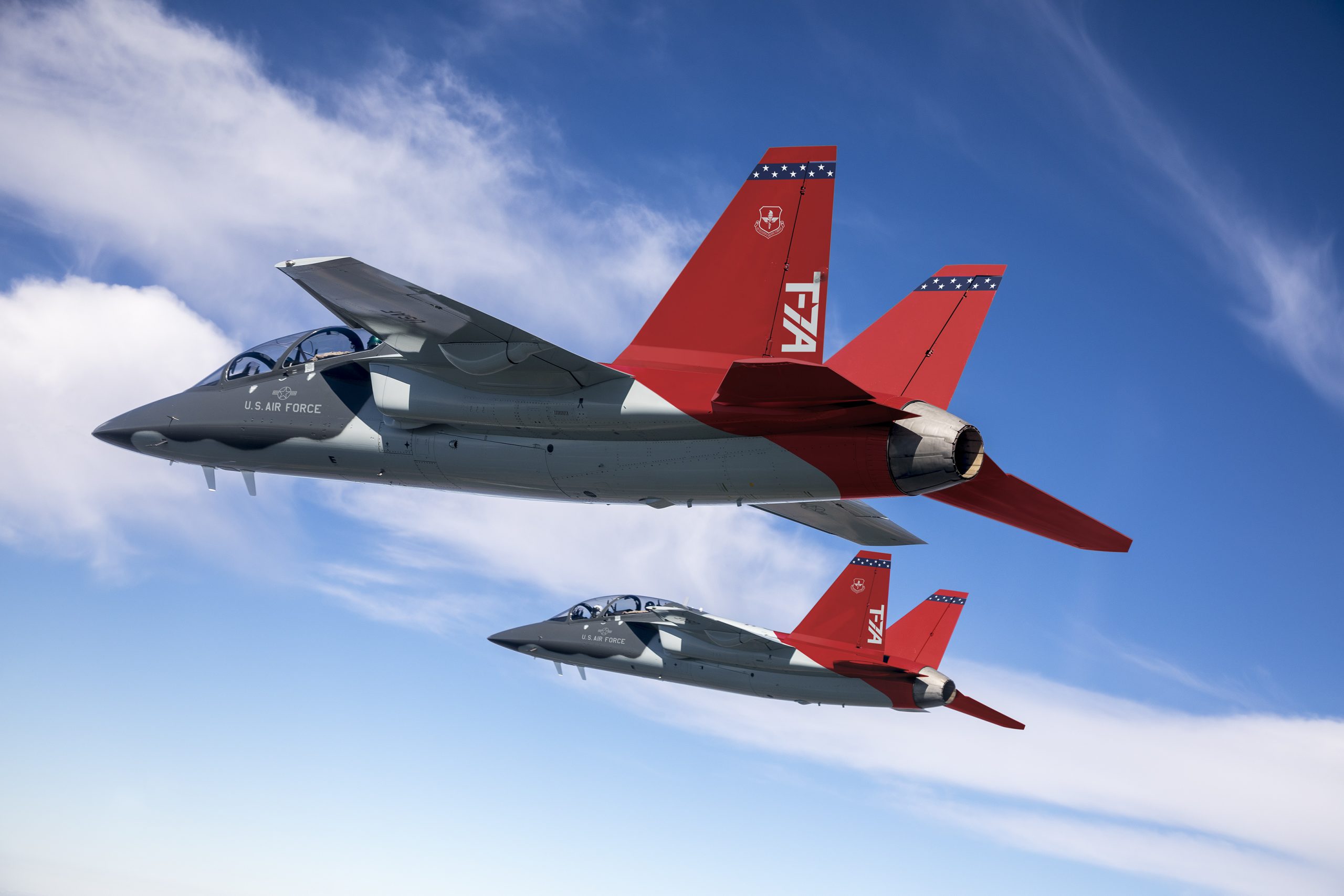
The need for change
While recognizing the critical importance of live flying, introducing young aviators to synthetic training is similarly valuable. It doesn’t just have to be in a mock-up cockpit in a simulator building. Through embedded synthetic training, instructors can present an array of emulated threats and scenarios for young students to experience in a realistic fashion, in their aircraft, in the air.
Looking further ahead into training on the front line, certain real-world flights cannot embody the kind of learning afforded in some high-end simulation. As an example, the USAF recently connected an F-35, F-22, F-16, and E-3 Sentry in a highly contested simulated environment during Distributed Mission Training (DMT) final acceptance test at Nellis AFB, Nevada. This training event was the first time these platforms were connected virtually. Bringing these assets together in the real-world is reserved for well-planned large scale exercises, but the synthetic world affords regular events like this. “The initial delivery at Nellis AFB is a major step forward as it establishes the framework for F-35 simulators around the world to interconnect,” according to a Lockheed Martin media release.
DMT links pilots at bases through an existing distributed network, enabling simulated training events between disparate aircraft types. “This base capability lays the foundation for pilots to truly train as they fight by enabling advanced tactics training through multi-domain operations in a simulated environment,” said Chauncey McIntosh, Lockheed Martin, vice president of F-35 Training and Logistics.

While modern 5th generation fighters have become easier for a pilot to fly, the tactical know-how and demands for pilots to absorb more roles and more tasks have spiraled. Also, some critical tactics and weaponry cannot be simulated in real-life mock air combat, so a synthetic environment isn’t just ideal, it’s necessary. As such, regular exposure to training events such as those in DMT will enable pilots to better experience the breadth of training required to stay current in all functions that a modern fighter aircraft offers.
Maintaining a high standard
There’s no telling what led to the crashes that tragically claimed the lives of two young pilots in June. We will need to await the formal reports from the safety investigation boards. But, in light of these accidents, fighter pilots have been keen to emphasize that while technology must be allowed to advance, it must not impact the ability for pilots to gain vital experience actually flying the planes they are assigned to potentially go to war in.
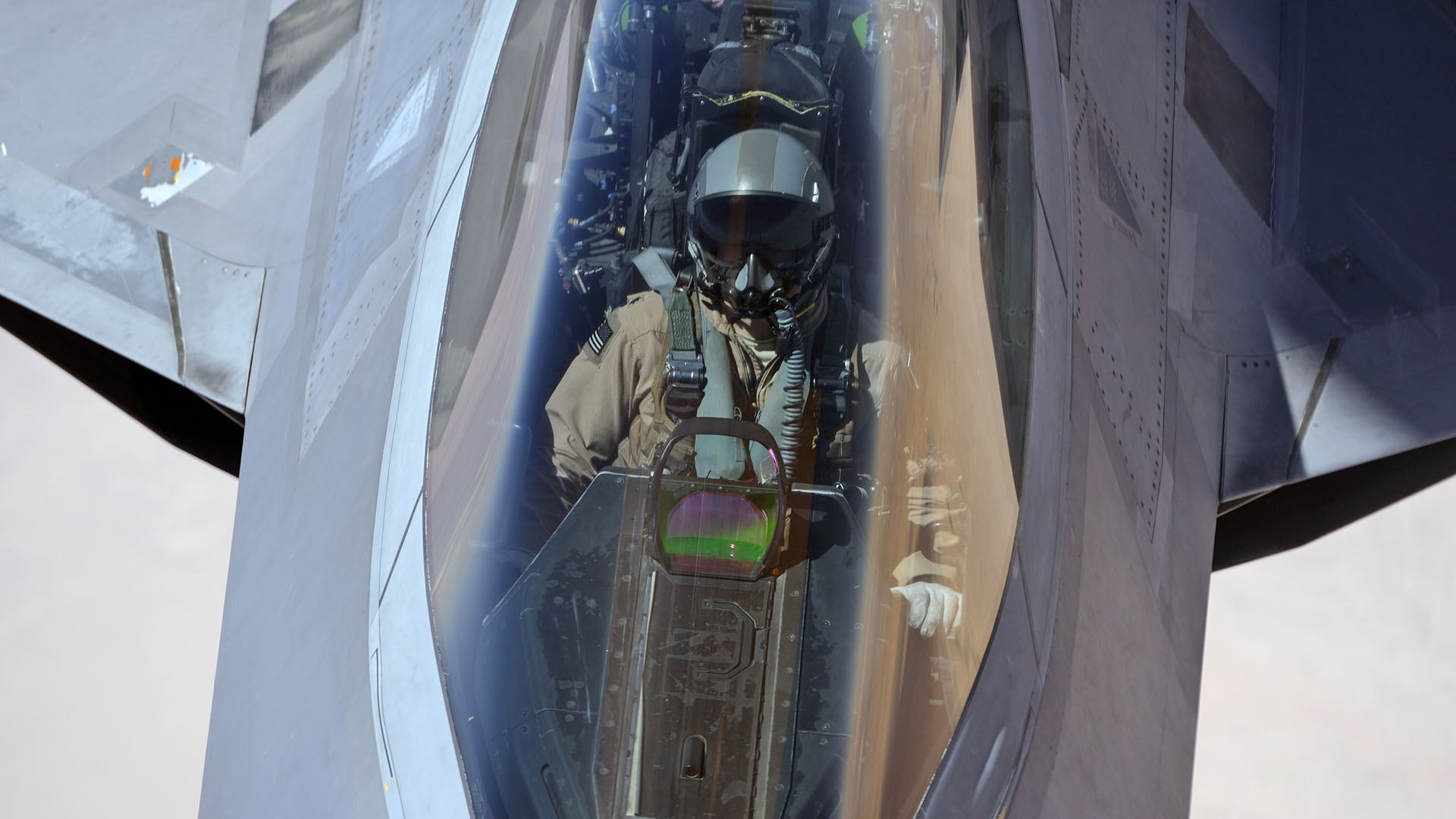
“As far as I can tell, standards concerning student expectations or the level of proficiency we require of them have remained the same,” one pilot concluded. “However, issues arise when instructor pilots demand the same level of competence out of students who show up with less total experience in flight.”
They further argued that cutting flight training earlier in a student’s career is a critical factor. “In later phases of training, they simply don’t have access to the same ratio of instructors. From initial flight training through the Basic Course at the FTU, there is an instructor pilot present for every single sortie. They can help students identify and recognize scenarios that could develop dangerously. This builds a student’s experience level, hopefully to the point that later in their flying training [post Mission Qualification Training, MQT] at their front line squadron when they no longer have the safety blanket of a watchful instructor, that they will be able to recognize a dangerous situation on their own.”
Experienced instructors want to ensure that young aviators arriving for their first operational assignments are equipped with all the necessary tools to be both lethal and safe. The Reforge initiative has the potential to help them do just that. It is a unique and ambitious opportunity to bring many factors together to suit both the needs of the USAF and those who engage in aerial warfighting in its aircraft each and every day. At the same time, it seems that those on front lines are adamant that it should do this while also preserving or even increasing actual time spent in the cockpit during what are the most formulative years of a fighter pilot’s career.
Contact the author: Jamie@thedrive.com
